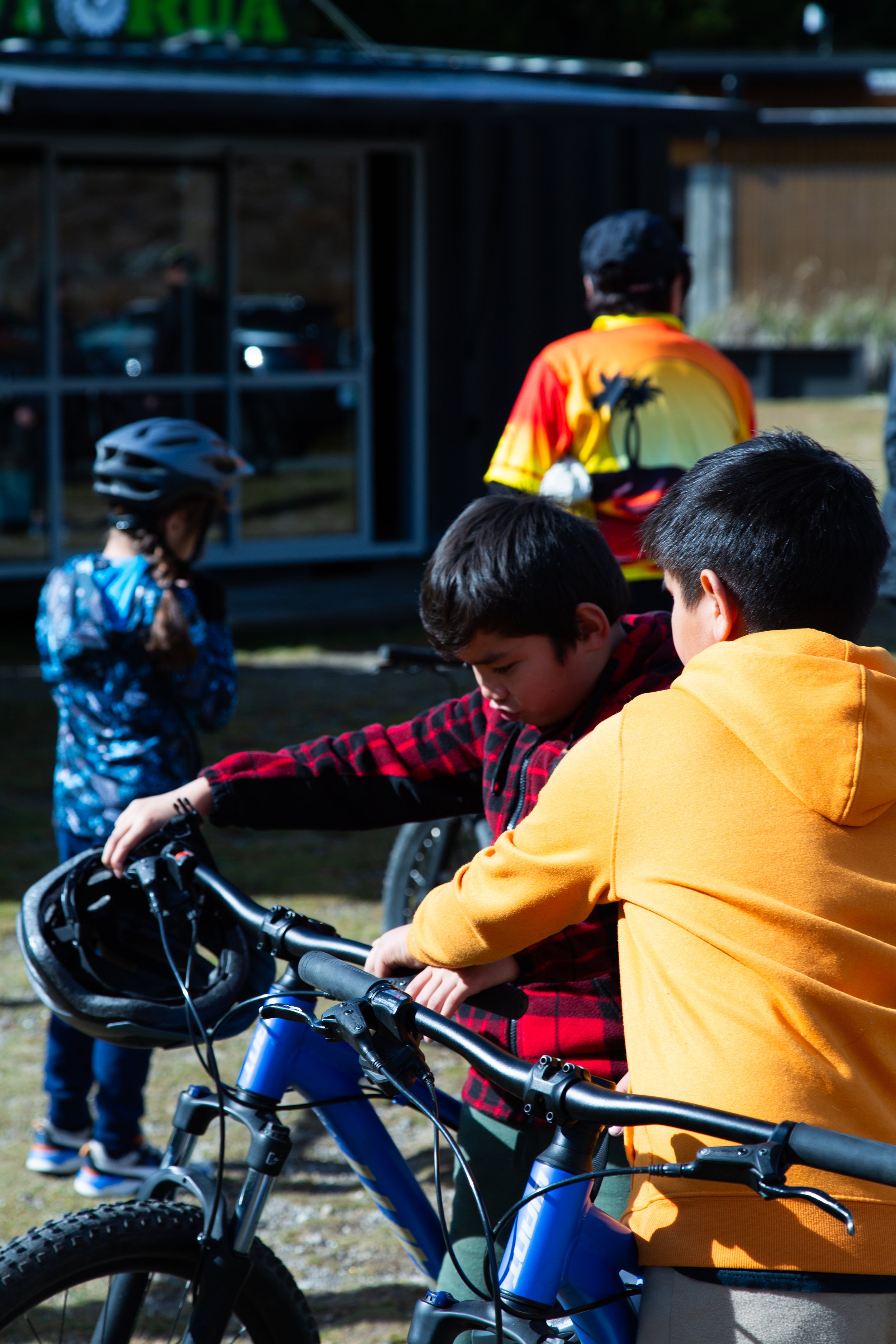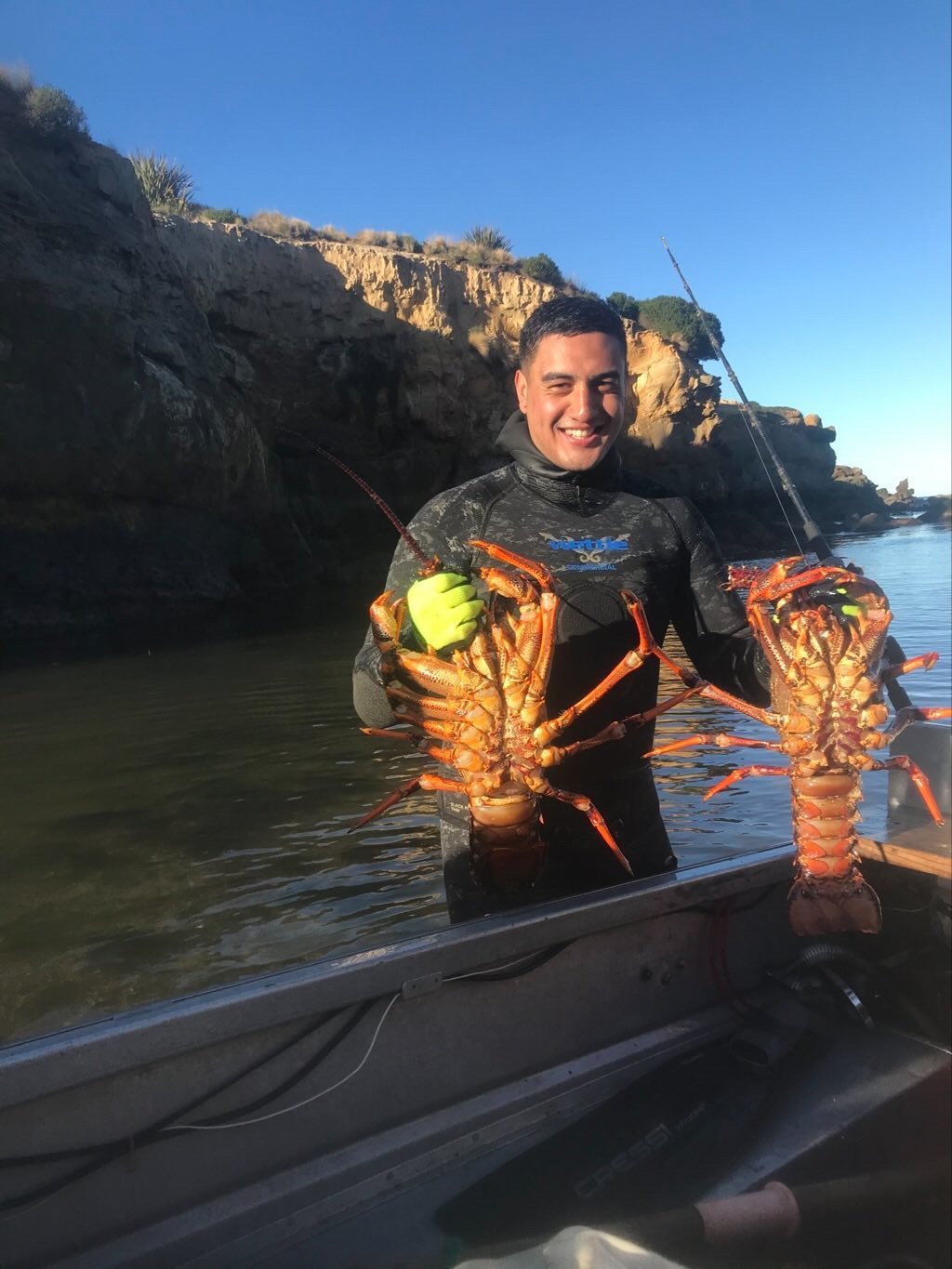Introduction to governance training for Tūhourangi uri
On Saturday 18th October, we held a governance training facilitated by EY Tahi focused on land blocks affiliated to Tūhourangi.
The idea for arose from the land block hui held in April and was set up as an opportunity for rangatahi to get an insight into governance training and for experienced trustees to ‘update’ their software and scout potential trustees.
Feedback from the training was overwhelmingly positive and future projects are being developed to further tautoko and foster this desire within our hapū and whānau to refine and improve their governance skills and capabilities.
E mihi ana ki a EY Tahi nā rātou te hui nei i taki, auahi ana e!
“Guide Maggie” to posthumously receive Oxford degree
Kāore te aroha ki tō tātau kōkara
Unceasing is the love we have for our mother
The groundbreaking work of one of Rotorua’s most celebrated guides is being recognised nearly a century after her death, with the University of Oxford posthumously awarding a Masters of Philosophy in Anthropology to Mākereti Papakura – also known as Guide Maggie.
Mākereti Papakura (Tūhourangi, Te Arawa) was born in Matatā in 1873, moving to Te Whakarewarewa Valley after secondary school and eventually training to be a guide under Guide Sophia Hinerangi.
International media attention came when she hosted the high-profile visit of the Duke and Duchess of Cornwall (late King George V and Queen Mary) at Te Whakarewarewa in 1901.
After touring a musical group to Sydney and then London, Mākereti moved to England before World War I, and commenced studies in anthropology at Oxford in 1922. She is still believed to be the first indigenous women to study at the University.
Mākereti died suddenly in April 1930, just a few weeks before she was due to present her thesis. Whānau members and scholars have advocated for her degree to be awarded ever since. The degree will be awarded at a special ceremony at Oxford at the end of September.
Tūhourangi Tribal Authority Chair, Kirikowhai Mikaere, says the announcement is a thrilling development.
“Like many others of her time, Mākereti’s mahi here at home and around the world has long been an inspiration to our people.
“No matter where she went or what she did, Mākereti was always conscious of her whakapapa and responsibilities to Tūhourangi, immortalising our culture and traditions – from a wāhine perspective – through her research.
“To see her work finally recognised in this way is hugely significant for Tūhourangi and Aotearoa, and is an enormous credit to her whānau and so many others who have advocated on her behalf over the past 95 years,” Ms Mikaere says.
“Even nearly 100 years on from her sudden passing, Mākereti continues to remind us of the strength and determination of our people, and the contributions we make in the world, every day.”
Mana Whenua Academy
Building on the foundation and mahi of establishing a hub - including space for Tūhourangi-owned pakihi - in 2020, unveiling Pou Whenua in 2021, the marae for our Tūhourangi Whānau Day in 2022, Te Pūtake o Tawa is now the hub for our Mana Whenua Academy for 2023.
The Mana Whenua Academy is a kaupapa to strengthen Tūhourangi connections to our own whenua, with the use of mountain bikes.
The inaugural Mana Whenua Academy cohort had their first wānanga yesterday and will continue to meet regularly through September, October and November. This has been with the support of multiple Tūhourangi-owned businesses, Rotorua community collaborations and whānau expertise who have come together to bring a long-awaited vision to life.
Rangitihi Pene sharing whakapapa and historical kōrero about the area
There are over 160km of trails in the forest that shelters Tūhourangi and Ngāti Whakaue whenua, which entice and welcome thousands of manuhiri each month from Rotorua, across Aotearoa and around the world to ride and experience them. The Mana Whenua Academy looks to develop a pathway for more and more of the people enjoying the ngahere and tracks can trace their whakapapa to the whenua and feel comfortable out there.
If you’d like to learn more about the Mana Whenua or to support, please contact hana@tuhourangi.iwi.nz.
Our People: Jermayne Maika
Whakanuia tēnei uri nō te whānau Maika-Te Rangipuawhe, nō Ngāti Wahiao & Te Pakira. We got to catch up with Jermayne at the ahurei earlier in June to hear about what he’s been up to. Pānui mai…
Jermayne is currently a 2nd year House Officer, based at Dunedin Hospital in Ōtepoti and graduated as a Doctor, with a Bachelors of Medicine at the end of 2021. Jermayne has been in Ōtepoti since 2015, after he finished school the year before, and not with the original intention of studying medicine or becoming a doctor either. Instead, with aspirations to play professional sport and pursue other career pathways - Jermayne arrived in Ōtepoti without having the qualifications required to get into Medicine or the 1st year Health Science programme.
Mea rawa ake, he completed a bridging course to get university entrance, which flowed into completing the foundation course to get into the 1st year Health Sciences programme at Otago University.
“I couldn’t see myself wanting to do anything else”
The past 9 years on this pathway to becoming a doctor has meant a lot of sacrifices; from study time to being engulfed in mahi and providing a high standard of care for patients - so the mahi/non-mahi balance has been key. Jermayne has figured out a couple of different ways to keep balance though; with playing rugby, horse riding, and the occasional hunt and dive with uncles, his little brother and the bros.
Coming back home to Rotorua when he can is also part of keeping things in balance, so being able to come back for Te Ahurei o Tūhourangi was extra special. Performing with the whānau, chill-ngahau vibes, and knowing everyone out there can connect to what we were signing about - kāre he kupu.
Looking forward into the future, Jermayne wants to complete his initial training as a doctor and add some work experience to his kete which might take him overseas for a little bit. He’s also hinted that he wants to return to Rotorua with his mahi, and that you might even catch him at the noho and wānanga on the road to Matatini in upcoming campaigns…
Nei ngā mihi nui ki a koe Jermayne i tō para i tēnei huarahi i te ao Rata, rongoā me te whakarauora i te iwi. Nei tō iwi e whakanui ana, e tautoko ana i a koe!
He kōrero akiaki, some words of encouragement to whānau interested in studying at Otago:
There’s good support for Māori medical students, and a good crew of whānau/hapori Māori in Ōtepoti
The Dean of Otago Medical School is a wahine Māori, ko Dr. Jo Baxter nō Poutini Ngāi Tahu me Ngāti Apa ki te Rā Tō
Expect there to be a bit of culture shock and difference to what you’re used to in the North Island
Ōtepoti as a city is oriented around students - ko ngā rangatahi ngā rangatira ia te rā, ia te rā!
Bonus and probably most importantly…. the hunting and diving is second to none, I’ll show you the spots lol - from Jermayne himself, e te iwi!
A new Tūhourangi pharmacist in the making
Over the weekend, Pounamu Keepa (Tūhourangi, Ngāruahine, Te Aitanga a Māhaki, Ngāti Kahungunu) attended the Ngā Kaitiaki o Te Puna Rongoā o Aotearoa (Māori Pharmacists Association) Symposium here in Rotorua, at Ōwhata Marae.
This year marked the 20th birthday of this rōpū, set up to manaaki and support Māori students studying pharmacy at university as well as those who enter into the workforce as kaimahi in hapori around Aotearoa and the world.
Pounamu is in his 4th and final year of studying towards a Bachelor of Pharmacy at Otago University. Having Ngā Kaitiaki, as well as the Māori Students Association and Māori support programmes at Otago throughout his years of study have been instrumental in him navigating this haerenga and graduating at the end of this year. The free kai and tutoring from the Māori centre have been a big help too, according to Pounamu.
When he first entered into his studies, Pounamu was one of 6 Māori in the pharmacy programme compared to the 10-12 first year students in 2023. A testament to Ngā Kaitiaki, the support for Māori students at their universities, scholarships provided by iwi and other rōpū, Kia Ora Hauora and other initiatives encouraging Māori into healthcare pathways, and of course whānau encouragement and tautoko.
“We can make a difference for our people” is the driver for many Māori students as they embark on their studies, and Pounamu is no exception. He looks to finish strong in his final year, to graduate later on at the end of 2023, then take up an internship in February 2024.
E poho kererū ana tō iwi, e Pounamu!
Auahi ana!
#OurPeople: Margaret Courtney and the role of the Māori Land Court
A highlight on Tūhourangi uri, Margaret Courtney, Masters of Laws and the role of the Māori Land Court in contemporary Aotearoa
The Māori Land Court of New Zealand has and continues to play a unique role within the justice system. Often referred to as the “people’s court,” the Māori Land Court functions to promote the retention of and appropriate use of Māori land.
There is, however, little research to understand the role that the Māori Land Court plays in modern Aotearoa New Zealand, something which has motivated Master of Laws student, Margaret Courtney, to pursue research in this area.
Courtney (Tūhourangi-Ngāti Wāhiao, Ngāti Whakaue, Tapuika, Ngāti Umutahi) completed a Bachelor of Laws and Masters of Indigenous Studies at Waikato University before completing her Master of Laws with the University of Otago in August of 2022.
“After completing my bachelors, I worked in Hamilton for Housing New Zealand and then for the Māori Land Court before moving home to Rotorua where I continued at the Waiariki Māori Land Court within the same role.
“I really enjoyed the work there. Not only are you helping whānau to work through a court process of whenua reclamation, but you wade through the Court records through generations making whakapapa connections that some never knew existed.
Eager to pursue further study, Margaret began research into how her own whenua had been impacted by the Native Land Court.
“I decided to do my Masters of Indigenous Studies on the Native Land Court, specific to whenua at Tarawera and the systems of how the once bigger Rotomahana Parekārangi block had been divided up and how my whānau became a very small owner. This was both an educational and personal journey for me.”
Today, part of this block of land is located within Te Wairoa Buried Village, a long-standing tourism operation. The village was created by excavation from the 1886 Mt. Tarawera eruption near Rotorua.
Courtney’s tupuna lived and worked at Te Wairoa prior to the 1886 devastation.
“I thought that’s where my learning would stop but then I wanted to get back into the legal way of thinking and writing, and so decided to pursue a Master of Laws.
Margaret’s research centres on the various roles of the Māori Land Court within the contemporary environment, drawing on publicly available material including transcripts and submissions to help determine the roles.
“My interest initially came from wondering why the Māori Land Court was referred to as the ‘people’s court’, then this morphed into questioning its place and role in the modern New Zealand legal system.
“At the beginning of writing my thesis I thought there were only three main functions of the court - adjudication, protection, and facilitation.
“Investigating these three descriptors in a historical and contemporary context found that historically, they were never in the interest of Māori. The protector role represented legislative protection and could be manipulated to enable alienation. The function did not protect cultural connection to the whenua, but rather ensured that there were fair dealings.
“The Native Land Court’s role was seen as paternalistic.
“Since the Te Ture Whenua Māori Act 1993, the meaning of those three roles has shifted to be somewhat in the interest of Māori.
“In contemporary time, the facilitator role is there to facilitate and assist Māori to develop, utilise, and occupy their land as well as facilitating discussion between whānau so they can come to resolutions by themselves.
“The promoter role was found to promote the retention of whenua, whakapapa links and the connection that Māori intrinsically have with their whenua and natural environment.”
Courtney’s research also looks at the perspective of landowners and trusts, digging through and drawing on information through submissions detailing experiences with the Māori Land Court.
“Although the role of the court from a landowner perspective is shaped by their experience of going to the court, there were still similarities between them. Many submissions detailed the importance of the protector role in bringing balance to minority landowners as most often the majority shareholder trumps.”
For Māori, going through mediation and the court process is often a long enduring task that most often systematically pits families, who are linked together by whakapapa, against one another.
“The individualisation of land is a real colonial concept to do with ownership. The Court system was imposed on us and now we are dealing with the ramification of it. Whānau now endure, in some cases, rigorous proceedings.
“Every generation, the shares get smaller and smaller. For some it won’t be worth much in terms of a monetary value but there is still the cultural connection to the whenua that our people seek as a method of reconnection to their identity and where they come from.
In the publication He Pou Herenga Justice Williams said the biggest challenge for the Court is the continued individualisation of titles. He states:613
“… the inevitable consequence of hyper-individualisation, which is the creation of tiny interests with little relevance in the lives of Māori landowners. It makes it hard for communities to maintain a meaningful connection. The nature of ownership system itself made moving forward in a Māori way always very difficult, because it was designed to achieve the opposite effect, of course.”
“The system was imposed on us, and we’ve had to live with it, which is why there needs to be a discussion about the role of the court and whether it continues to be that.
“It’s important that research is and continues to be conducted to uncover how it can continuously evolve into one with the aspirations of whānau at the heart of its design.
“There has been a raft of studies done over many years on Māori land tenure, but the Court still exists in the same format that it always has. There needs to be some type of disruption and innovation to see how best it can move forward if that is the wish of the people.
“The bigger question, therefore, is, can there be change and what a remodel would look like?”
Courtney refers to the work of Otago lecturer Mihiata Pirini (Tūwharetoa, Whakatōhea), who completed her thesis on the Māori Land Court in 2020 after the failed 2017 reforms. She considered a design process incorporating landowners’ participation and views of the court.
The judiciary have also held a long-standing view that empirical research should be undertaken to uncover if the Act is a barrier to Māori land development.
“So, between that design process and understanding the roles of the court, we then need political goodwill and necessary government resourcing to try make innovative change.”
Courtney wishes to acknowledge the support of her supervisors throughout her years at Otago University including Dr Paerau Warbrick, Professor Jacinta Ruru and Dr Bridgette Toy-Cronin.












